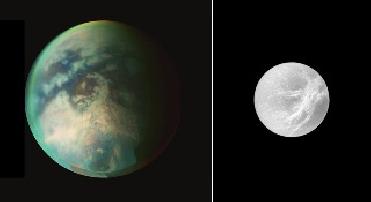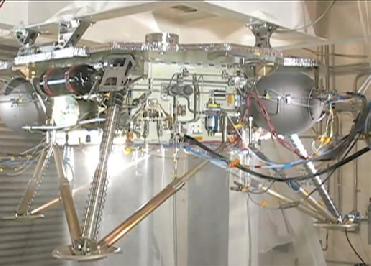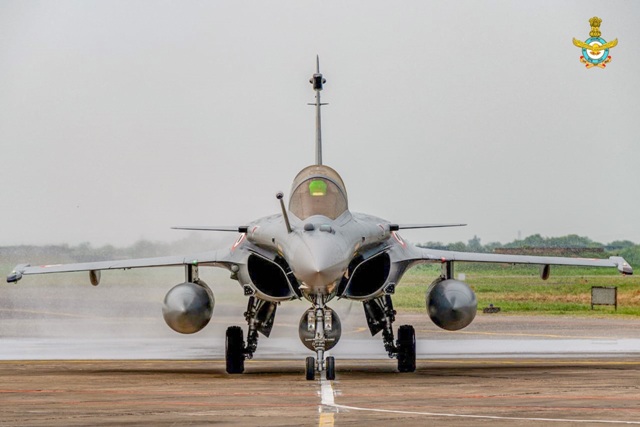
Composite of two images from NASA's Cassini spacecraft of Saturn's moons Titan (left) and Dione (right). NASA photo
NEW DELHI (BNS): NASA's Cassini spacecraft will attempt a special double flyby to Saturn's moons Titan and Dione on Monday.
The Titan flyby, on Monday, will take Cassini to within about 7,500 kilometers (4,700 miles) of the moon's surface.
Cassiniís cameras will capture high-resolution pictures of the Belet and Senkyo areas, dark regions around the equator that ripple with sand dunes, a NASA statement said.
On Tuesday, Cassini will make its closest approach to the medium-sized icy moon Dione and plunge to within about 500 kilometers (300 miles) of the moonís surface in an attempt to find evidence of activity at Dione by using its magnetometer and fields and particles instruments.
Thermal mapping by the composite infrared spectrometer will also help in that search. In addition, the visual and infrared mapping spectrometer will examine dark material found on Dione to help scientists understand the source of this dark material.
This is Cassini's second close encounter with Dione. The first flyby in October 2005, and findings from the Voyager spacecraft in the 1990s, hinted that the moon could be sending out a wisp of charged particles into the magnetic field around Saturn and potentially exhaling a diffuse plume that contributes material to one of the planet's rings.
Like Enceladus, Saturn's more famous moon with a plume, Dione features bright, fresh fractures. But if there were a plume on Dione, it would certainly be subtler and produce less material.
Cassini has made three previous double flybys and another two are planned in the years ahead. The mission is nearing the end of its first extension, known as the Equinox mission. It will begin its second mission extension, known as the Solstice Mission, in October 2010.
 Previous Article
Previous Article Next Article
Next Article













The Indian Air Force, in its flight trials evaluation report submitted before the Defence Ministry l..
view articleAn insight into the Medium Multi-Role Combat Aircraft competition...
view articleSky enthusiasts can now spot the International Space Station (ISS) commanded by Indian-American astr..
view article